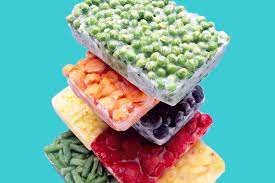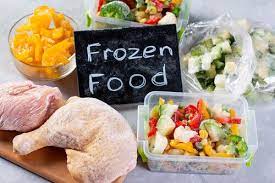We took a deep dive into the recent facts and figures surrounding the growth of the frozen foods market.
ProNano Consulting Company in the food industries puts its experience to cooperate with food manufacturers and food safety, and we talk about the development of frozen foods in the markets
Frozen food can be the perfect quick and easy meal during the week, with millions of us across the globe digging through our freezer for the perfect combination.
With the health food boom over the past 10 years, assumption says that consumers are seeking more towards healthy and fresh food; contrary, this whole new generation is choosing more frozen foods as compared to fresh foods products.

Table of Contents
Why are we eating more Frozen Foods?
Frozen food demand and market determinants majorly focused upon consumer behaviour ranging from choosing the variety of food, frequency of purchasing the frozen food products or rate of shifting the preference from fresh food category.
Prices, advertising, discounts and offers and changing taste also act as key factors on the demand of prepared frozen meals.
In a consumer study, it was founded that variety and taste are the top drivers in the frozen entree category, which is followed by health and quality.
The rise of the frozen food category is majorly attributed to convenience offered by these products.
The ease of frozen food allows for less time in the kitchen, and more time with the family. Which makes sense, as studies show time spend by consumers in kitchen to prepare dinner have fallen drastically.
A report published by the U.S. Census and Simmons National Consumer Survey showed that in 2019 more than 130 million Americans consumed complete frozen dinners, which is anticipated to grow 500,000 by the end of the year 2023.
Frozen Food: A Convenient Option to reduce Food Wastage
In the U.S. alone, almost 40% of food goes to waste. That’s a pretty alarming statistic.
Food waste one of the largest environmental and agricultural issues faced across countries today. The huge amount of food waste cost high value on consumers’ pocket.
As per the U.S. Department of Agriculture, the average American family accounted to waste nearly $1,500 amount of food every year, which totals to $162 billion every year.
Food waste cost is not only borne on an individual-basis, it pushes the overall food prices up and create a dent on whole society’s plate—it’s a part of big issue.
Food waste isn’t just affecting us financially, it’s affecting the environment too. 20% of US landfills are made up of food wastage, and it’s one of the largest contributors to solid waste in landfills.
Frozen Food in Restaurants
Frozen food can be a solution for a food waste and can be beneficial for health, environment and finances.
It has a much longer shelf life than fresh food; plus the production process reduces the waste generation.
For an example, more than 40% of wasted food is restaurant-originated, from which more than 80% falls under the category of unused food.
If this was swapped with frozen food, meals and unused ingredients can be restored and reused rather than dumping in dustbins.
How are Consumers Shopping for Frozen Food?
The grocery list has changed a lot as per the market offerings food available in the stores.
Along with it, there is a major shift in methods to shop. In the digitally-surrounded marketplace, brick-and-mortar stores are still preferred by a large chunk of consumers, but with several options to find, shop and pay, online channels are leveraging the benefits of convenience.
Increasing importance of omnichannel to Millennials and Gen-Z customers is encouraging retailers and brands to increase their scope of offerings in both digital platforms and brick-and-mortar set-ups.
Retailers are aggressively investing in digital technologies to make the shopping experience easy and smooth right from ordering to delivering.

Companies that are Contributing to Frozen Food Industry
Companies are playing a very crucial role in shaping the global frozen food market with their innovative offerings.
For instance, food manufacturers like Nestlé are offering the frozen entree category with a major focus on variety and taste.
In 2019, M&M Meat Shops launched a frozen-food section under brand name M&M Food Market Express at seven convenience stores and retail chains in Canada. The variety and quality of frozen foods have improved drastically, and consumers and/shoppers are opting foods from freezer case for convenient and healthy meal options.
As per Astute Analytica, Nestle leads the global frozen food market and hold maximum market share, followed by Permira, McCain Foods, ConAgra Foods and others.
The Power of Suppliers
Frozen food products are undifferentiated by nature, which makes it more difficult for companies and manufacturers to retain buyers.
This forces them to compete through end-user brand loyalty and product pricing. Switching cost for buyers in the frozen food industry is low.
With significant proportion of retailer sales, the market witnessed a reduced power of buyers; major buyers such as Carrefour, Wal-Mart and Tesco among others operate with their own distribution channel for frozen food products, which boosts the buying power.
Power of suppliers is analysed to be high in degree owing to the fact that frozen foods are undifferentiated product category with capital-intensive maintenance—require expensive freezers.
Large-scale food processing companies usually negotiate on supply contracts with farmers and buyers, while small-scale companies have little control over product prices.
Discussing about availability of substitutes of frozen foods, there are a number of substitutes available for frozen food products such as dried food, shelf-stable foods, canned foods, and refrigerated and fresh produce.
One of the major traits of frozen food is long shelf-life, which in case of substitutes, can be negotiated with dried food, shelf-stable foods, canned foods that too without investing extra cost on expensive freezers and special warehouses.
Global Frozen Food Market Rivalry
Degree of rivalry in the frozen food market is strong, due to the amount of successful food producer marketing campaigns.
The market is dominated by only few companies that include Nestle, Permira, McCain Foods and ConAgra Foods as major contributors.
The companies require high fixed cost due to establishment of production lines with specialized equipment and required sized facilities; which made exit barriers difficult and require divestment. These factors collaboratively support the high intensity of rivalry in the market.

